Resident Crews of the International Space Station (ISS)
![]()
ISS: Expedition 10 |
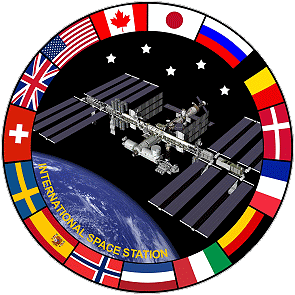 |
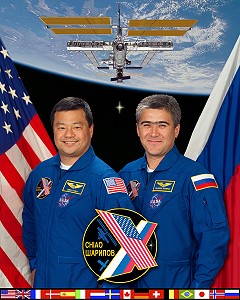
alternative crew photo |
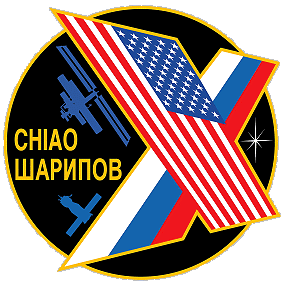 |
 |
|
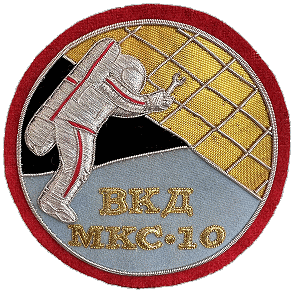 |
|
![]()
Crew, launch- and landing data
| No. | Nation | Surname | Given names | Position | Spacecraft (launch) |
Launch date |
Launch time |
Spacecraft (landing) |
Landing date |
Landing time |
Mission duration |
Orbits |
| 1 | Chiao | Leroy | ISS-CDR | Soyuz TMA-5 | 14.10.2004 | 03:06:27.898 UTC | Soyuz TMA-5 | 24.04.2005 | 22:08:27.2 UTC | 192d 19h 01m 59s | 3032 | |
| 2 | Sharipov | Salizhan Shakirovich | Flight Engineer | Soyuz TMA-5 | 14.10.2004 | 03:06:27.898 UTC | Soyuz TMA-5 | 24.04.2005 | 22:08:27.2 UTC | 192d 19h 01m 59s | 3032 |
Backup Crew
| No. | Nation | Surname | Given names | Position |
| 1 | McArthur | William Surles, Jr. "Bill" | ISS-CDR | |
| 2 | Tokarev | Valeri Ivanovich | Flight Engineer |
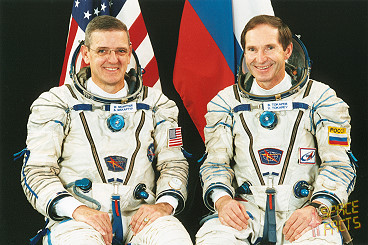 |
 |
Expedition Report
|
Expedition 10 launched with
Soyuz
TMA-5 from the Baikonur Cosmodrome and landed 85 km northeast of
Arkalyk. The Expedition 10 officially began with undocking of Russian spacecraft Soyuz TMA-4 on October 23, 2004 at 21:08:22 UTC and Expedition 9 ended. The ISS Expedition 10 was called a "caretaker" crew. Following a two-day solo flight Soyuz TMA-5 docked to ISS on October 16, 2004. Salizhan Sharipov and Leroy Chiao replaced the Expedition 9 crew. 17 experiments from the NASA were planned, including first work with the DAFT experiment and completing the ISSI. This experiment was conducted during Space Station Expedition 7 and/or Expedition 8. Notable accomplishments included replacing critical hardware in the Quest Joint Airlock; repairing U.S. spacesuits; and submitting a scientific research paper on ultrasound use in space. Leroy Chiao was also the first astronaut to vote in a U.S. Presidential election from space. Progress M-51 was launched at 22:19:34 UTC on December 23, 2004. The spacecraft docked with the Aft port of the Zvezda module at 23:57:45 UTC on December 25, 2004. Progress M-51 carried supplies to the International Space Station, including food, water and oxygen for the crew and equipment for conducting scientific research. The freighter remained docked for two months before undocking at 16:06:30 UTC on February 27, 2005 to make way for Progress M-52. Between undocking and deorbit, Progress M-51 was used for a series of tests. It was deorbited at 16:17:00 UTC on March 09, 2005. The spacecraft burned up in the atmosphere over the Pacific Ocean, with any remaining debris landing in the ocean at around 17:03:11 UTC. The first EVA by Leroy Chiao and Salizhan Sharipov occurred on January 26, 2005 (5h 30m) to install a work platform on the hull of the command module, to mount the European commercial experiment Rokviss, to relocate the Japanese space exposure experiment package and to install a Russian biological experiment. Progress M-52 was launched at 19:09:18 UTC on February 28, 2005. The spacecraft docked with the Aft port of the Zvezda module at 20:10:08 UTC on March 02, 2005. Progress M-52 carried supplies to the International Space Station, including food, water and oxygen for the crew and equipment for conducting scientific research. It also carried the TNS-0 nanosatellite, which was deployed from the ISS on March 28, 2005 at 08:30 UTC. The freighter remained docked for three and a half months before undocking at 20:16:10 UTC on June 15, 2005 to make way for Progress M-53. It was deorbited at 23:16:00 UTC on June 15, 2005. The spacecraft burned up in the atmosphere over the Pacific Ocean, with any remaining debris landing in the ocean at around 00:02:41 UTC on June 16, 2005. The second and final EVA was performed by Leroy Chiao and Salizhan Sharipov on March 28, 2005 (4h 30m) to install three communications antennas for the ATV (Automated Transfer Vehicle) and a GPS (Global Positioning System) antenna. Salizhan Sharipov manually deployed a Russian experiment, tossing a small science satellite called "Nanosatellite" into orbit. Many experiments from earlier Expeditions remained aboard the Space Station and continued to benefit from the long-term research platform provided by the orbiting laboratory. These experiments included: Crew Earth Observations (CEO) takes advantage of the crew in space to observe and photograph natural and man-made changes on Earth. The photographs record observable Earth surface changes over time, as well as more fleeting events such as storms, floods, fires and volcanic eruptions. Together they provide researchers on Earth with vital, continuous images needed to better understand the planet. Earth Knowledge Acquired by Middle School Students (EarthKAM), an education experiment, allows students to program a digital camera aboard the Station to take pictures of a variety of geographical targets for study in the classroom. Behavioral Issues Associated with Isolation and Confinement: Review and Analysis of Astronaut Journals gathers information on behavioral and human factors related to the design of the equipment and procedures and sustained human performance during long-duration missions. Investigating the Structure of Paramagnetic Aggregates from Colloidal Emulsions (InSPACE) seeks to gather basic data on magnetorheological fluids - a new class of "smart materials" that can be used to improve or develop new brake systems, seat suspensions, robotics, clutches, airplane landing gear, and vibration damper systems. Samples for this experiment onboard the Station can be processed inside the Microgravity Science Glovebox facility, an enclosed work area that allows the crew to work safely with these fluids. Pore Formation and Mobility Investigation (PFMI), an experiment performed in the Microgravity Science Glovebox, will melt samples of transparent modeling material to study how bubbles can be trapped in metal or crystal samples during space processing. Eliminating these bubbles could contribute to the development of stronger materials. Several samples were processed inside the glovebox during Expeditions 5, 7, 8 and 9. These samples can be processed several times with different experiment settings, allowing investigators to study different phenomena. Materials on the International Space Station Experiment (MISSE) is a suitcase sized experiment attached to the outside of the Space Station. It exposes hundreds of potential space construction materials to the environment. The samples will be returned to Earth for study during a later expedition. Investigators will use the resulting data to design stronger, more durable spacecraft. Serial Network Flow Monitor (SNFM) involves the crew installing software on the EXPRESS Laptop computer to monitor communications and analyze the amount of data flowing between the payloads aboard the Space Station. Results will show payload operators how efficiently their data is sent through the computers onboard. Protein Crystal Growth Single-locker Thermal Enclosure System (PCG-STES) will continue to process crystals that have been growing since Expedition 6. Crystals also were grown on Expeditions 2, 4 and 5, then returned to Earth for analysis. The facility provides a temperature-controlled environment for growing high-quality protein crystals of selected proteins in microgravity for later analyses on the ground to determine the proteins' molecular structure. Research may contribute to advances in medicine, agriculture and other fields. Space Acceleration Measurement System (SAMS) and Microgravity Acceleration Measurement System (MAMS) sensors measure vibrations caused by crew, equipment and other sources that could disturb microgravity experiments. For the Cell Biotechnology Operations Support Systems Fluid Dynamics Investigation (CBOSS - FDI), crewmembers will conduct a fluid-mixing test using CBOSS fluid samples. CBOSS is used to grow three-dimensional tissue that retains the form and function of natural living tissue, a capability that could hold insights in studying human diseases, including various types of cancer, diabetes, heart disease and AIDS. These types of cellular experiments were conducted during Expeditions 3 and 4. A critical step in performing these cell experiments involves mixing fluids. These fluid mixing tests will be conducted to improve future experiments. Education Payload Operations (EPO) includes educational activities that will focus on demonstrating science, mathematics, technology, engineering or geography principles. EPO is designed to support the NASA Mission to inspire the next generation of explorers. CBOSS will study the long-term behavior of colloids - a system of fine particles suspended in a fluid - in a microgravity environment, where the effects of sedimentation and convection are removed. Crewmembers will evenly mix the samples, photograph the growth and formations of the colloids, and downlink the images for analysis. This experiment began on Expedition 8. Biopsy allows researchers to take biopsies of their calf muscles before and after their stay on board the Space Station. This will allow scientists to begin developing an inspace countermeasure exercise program aimed at keeping muscles at their peak performance during long missions in space. Some on-orbit crew time is required. Chromosomal Aberrations in Blood Lymphocytes of Astronauts (Chromosome) will study space radiation on humans. The expected results will provide a better knowledge of the genetic risk of astronauts in space and can help to optimize radiation shielding. No on-orbit crew time is required. Advanced Diagnostic Ultrasound in Microgravity (ADUM) will be used to determine the ability of minimally trained Station crewmembers to perform advanced ultrasound examinations after using a computer-based training program. The crewmember being "examined" will be immobilized on the Crew Medical Restraint System backboard. The other crewmember will then examine him using the Human Research Facility ultrasound equipment under the direction of a doctor in the Mission Control Center in Houston. Verification of these advanced ultrasound techniques and telemedicine strategies could have widespread applications in emergency and rural care situations on Earth. Effect of Prolonged Spaceflight on Human Skeletal Muscle (Biopsy): To determine the time course and extent of functional and structural change in limb skeletal muscle with prolonged spaceflight, establish the cellular mechanisms of the observed functional alterations, and calculate the new steady state that would likely be reached in calf muscle structure and function following a trip to Mars and back. The Cellular Biotechnology Operations Support System (CBOSS) is a stationary bioreactor system developed by the Cellular Biotechnology Program for the cultivation of cells aboard the International Space Station (ISS). The CBOSS payload complement consists of the following hardware elements. Cell cultures are incubated in the Biotechnology Specimen Temperature Controller (BSTC), which contains an isothermal chamber with carbon dioxide concentration control. The Gas Supply Module (GSM) provides pressurized gases to the incubator unit, while the Biotechnology Refrigerator (BTR) serves for cold storage of labile experiment components. The Biotechnology Cell Science Stowage (BCSS) is comprised of caddies containing experiment supplies and cryodewars for the transport of cryopreserved cells for on-orbit inoculation and the return of frozen biospecimen samples. Cellular Biotechnology Program experiments conducted in the ISS with this system during Expeditions 3, 4, and 5 involved human kidney cells, human colon cancer cells, rat adrenal gland tumor cells, ovarian cancer cells, mouse blood cancer cells, human immune system tissue, and human liver cells, representing principal investigators from various institutions and industry. Typically, CBOSS is used to provide a controlled environment for the cultivation of cells into functional three-dimensional tissues. A critical step in performing these experiments involves complete mixing of cells and fluids during various tissue culture procedures. The CBOSS - Fluid Dynamics Investigation (FDI) is comprised of a series of experiments aimed at optimizing CBOSS operations while contributing to the characterization of the CBOSS stationary bioreactor vessel (the Tissue Culture Module or TCM) in terms of fluid dynamics in microgravity. These experiments will also validate the most efficient fluid mixing techniques on orbit, which are essential to conduct cellular research in that environment. In addition, some experiments will examine bubble removal and microgravity biotechnology processes with applications to future cell science research in space. By allowing photographs to be taken from space, the Crew Earth Observations (CEO) experiment provides people on Earth with image data needed to better understand our planet. The photographs - taken by crewmembers using handheld cameras - record observable Earth surface changes over a period of time, as well as more fleeting events such as storms, floods, fires and volcanic eruptions. Chromosomal Aberrations in Blood Lymphocytes of Astronauts: Cosmic radiation is a major risk factor in human spaceflight. This study will assess the mutagenic impact of ionizing radiations in crewmembers by analyzing chromosomal aberrations in blood lymphocytes, from pre- and post-flight blood samples. Previous investigations studying chromosomal aberrations were conducted using conventional block-stained Giemsa preparations. A disadvantage of this method is that only unstable aberrations, which are of less biological significance, can be detected. In the past few years, new methods of chromosome recognition were developed, such as fluorescence in situ hybridization (FISH), multi-color FISH (mFISH), and multi-color banding FISH (mBAND), which enable researchers to mark all chromosome pairs and allow detection of almost all aberration types in the genome, including stable and unstable ones. These new methods will provide new information about the effects of space radiation on humans. EarthKAM (Earth Knowledge Acquired by Middle school students) is a NASA education payload that enables students to photograph and examine Earth from a space crew's perspective. Using the Internet, working through the EarthKAM Mission Operations Center located at the University of California at San Diego (UCSD), middle school students direct a camera mounted at the science-grade window in the station's Destiny science module to capture high-resolution digital images of features around the globe. Students use these images to enhance their study of geography, geology, botany, history, earth science, and to identify changes occurring on the Earth's surface, all from the unique vantage point of space. Using the high-speed digital communications capabilities of the ISS, the images are downlinked in near real-time and posted on the EarthKAM web site for the public and participating classrooms around the world to view. Education Payload Operations (EPO) is an education payload or activity designed to support the NASA Mission to inspire the next generation of explorers. Generally, these activities will focus on demonstrating science, mathematics, technology, engineering or geography principles. Video recording of the demonstrations and/or still photographic documentation of a crewmember operating EPO hardware while on orbit will achieve EPO goals and objectives. Overall goal for every expedition is to facilitate education opportunities that use the unique environment of human spaceflight. Investigating the Structure of Paramagnetic Aggregates from Colloidal Emulsions (InSPACE): This fluid physics experiment will be performed in the Microgravity Science Glovebox, which has an enclosed workspace that provides power, computer interfaces and other resources for experiment operations. It is also equipped with glove ports that enable the crew access to operate the experiment. The purpose of this experiment is to gather basic data on magnetorheological (MR) fluids - a new class of "smart materials" or controllable fluids. Due to the quiet, rapid-response interface that they provide between mechanical components and electronic controls, MR fluids can be used to improve or develop new brake systems, seat suspensions, robotics, clutches, airplane landing gear and vibration damping systems. Crewmember and Crew-Ground Interactions During ISS Missions (Interactions): The Interactions experiment seeks to identify and characterize important interpersonal and cultural factors that may impact the performance of the crew and ground support personnel during International Space Station missions. The study will examine - as it did in similar experiments on the Russian space station MIR - issues involving tension, cohesion and leadership roles in the crew in orbit and in the ground support crews. The study will have both the crewmembers and ground control personnel complete a standard questionnaire. Crewmembers and mission control personnel from several of the first eight increments will serve as subjects for this study. The Space Acceleration Measurement System II (SAMS-II) will measure accelerations caused by vehicle, crew and equipment disturbances. To complement the SAMS-II measurements, the Microgravity Acceleration Measurement System (MAMS) will record accelerations caused by the aerodynamic drag created as the Station moves through space. It also will measure accelerations created as the vehicle rotates and vents water. These small, quasi-steady accelerations occur in the frequency range below 1 Hertz. The Microgravity Acceleration Measurement System (MAMS) measures accelerations that affect the entire Space Station, including experiments inside the laboratory. It fits in a double middeck locker, in the U.S. Laboratory Destiny in EXPRESS Rack No.1. It was preinstalled in the rack, which was placed in the laboratory during Expedition 2. It will remain on board the Station permanently. The Materials on the International Space Station Experiment (MISSE) Project is a NASA/Langley Research Center-managed cooperative endeavor to fly materials and other types of space exposure experiments on the Space Station. The objective is to develop early, low-cost, non-intrusive opportunities to conduct critical space exposure tests of space materials and components planned for use on future spacecraft. Promoting Sensorimotor Response Generalizability: A Countermeasure to Mitigate Locomotor Dysfunction After Long-duration Spaceflight (MOBILITY): Astronauts returning from spaceflight can experience difficulty walking as the brain must readapt to programming body movements in a gravity environment. The MOBILITY experiment will use tests taken before and after a long-duration spaceflight to determine whether a specific training regimen using the Station's treadmill can help astronauts recover more quickly when they return to Earth. Specifically, do astronauts who use this unique treadmill workout in space readjust more quickly when once again exposed to the effects of gravity? Pore Formation and Mobility During Controlled Directional Solidification in a Microgravity Environment Investigation (PFMI): On Earth when scientists melt metals, bubbles that form in the molten material can rise to the surface, pop and disappear. In microgravity, in the near-weightless environment created as the International Space Station orbits the Earth, the lighter bubbles do not rise and disappear. Prior space experiments have shown that bubbles often become trapped in the final metal or crystal sample. In the solid, these bubbles, or porosity, are defects that diminish both the material's strength and usefulness. The Pore Formation and Mobility Investigation will melt samples of a transparent modeling material, succinonitrile and succinonitrile water mixtures. Investigators will be able to observe how bubbles form in the samples and study their movements and interactions. The Soyuz spacecraft is composed of three elements attached end-to-end - the Orbital Module, the Descent Module and the Instrumentation/Propulsion Module. The crew occupied the central element, the Descent Module. The other two modules are jettisoned prior to re-entry. They burn up in the atmosphere, so only the Descent Module returned to Earth. Having shed two-thirds of its mass, the Soyuz reached Entry Interface - a point 400,000 feet (121.9 kilometers) above the Earth, where friction due to the thickening atmosphere began to heat its outer surfaces. With only 23 minutes left before it lands on the grassy plains of central Asia, attention in the module turned to slowing its rate of descent. Eight minutes later, the spacecraft was streaking through the sky at a rate of 755 feet (230 meters) per second. Before it touched down, its speed slowed to only 5 feet (1.5 meter) per second, and it lands at an even lower speed than that. Several onboard features ensure that the vehicle and crew land safely and in relative comfort. Four parachutes, deployed 15 minutes before landing, dramatically slowed the vehicle's rate of descent. Two pilot parachutes were the first to be released, and a drogue chute attached to the second one followed immediately after. The drogue, measuring 24 square meters (258 square feet) in area, slowed the rate of descent from 755 feet (230 meters) per second to 262 feet (80 meters) per second. The main parachute was the last to emerge. It is the largest chute, with a surface area of 10,764 square feet (1,000 square meters). Its harnesses shifted the vehicle's attitude to a 30-degree angle relative to the ground, dissipating heat, and then shifted it again to a straight vertical descent prior to landing. The main chute slowed the Soyuz to a descent rate of only 24 feet (7.3 meters) per second, which is still too fast for a comfortable landing. One second before touchdown, two sets of three small engines on the bottom of the vehicle fired, slowing the vehicle to soften the landing. On April 17, 2005 Russian spacecraft Soyuz TMA-6 brought the Expedition 11 to the station. Finally, the station command changed from US astronaut Leroy Chiao to Russian cosmonaut Sergei Krikalyov. Expedition 10 officially ended with undocking of Soyuz TMA-5, carrying Leroy Chiao and Salizhan Sharipov, on April 24, 2005 at 18:44:40 UTC. During the stay on board of the ISS the crew of Expedition 10 carried out the following scientific experiments: ADUM (Advanced Diagnostic Ultrasound in Microgravity), ARISS (Amateur Radio on the International Space Station), BCAT-3-4-CP (Binary Colloidal Alloy Test - 3 and 4: Critical Point), BCAT-3-SC (Binary Colloidal Alloy Test - 3: Surface Crystallization), Biodegradation (Initial stage of Biodegradation and Biodeterioration in Space), Bioekologia (Generation of High Efficiency of Microorganisms for the Production of Preparations of Biodegradable Oil, Organophosphorus Material, Measures for the Protection of Plants, as well as, of Exopolysaddharides Uses in the Petroleum Industry), Bioemulsia (Research and Development of a Self-Contained Reactor of the Shielded Type For Production of Biomass of Microorganisms and Biologically Active Substances), Biopsy (Effect of Prolonged Space Flight on Human Skeletal Muscle), Biorisk (Influence of Factors of the Space Environment on the Condition of the System of Microorganisms-Hosts Relating to the Problem of Environmental Safety of Flight Techniques and Planetary Quarantine), Biotest (Biochemical Status of Humans in Long Duration Space Flight), BOP (Bone Proteomics), Brados (Acquisition of Data About the Radiological, Electromagnetic and Different Physical Environments on Board ISS, and Their Effects on the Safety of the Crew, Space Equipment and Materials), Cardio-ODNT (Dynamics of the Main Factors of Cardiac Function, of Central and Regional Circulation in Rest and During the Influence of Lower Body Negative Pressure), CBOSS-FDI (Cellular Biotechnology Operations Support Systems: Fluid Dynamics Investigation), CEO (Crew Earth Observations), Chromosome-1 (Chromosomal Aberrations in Blood Lymphocytes of Astronauts-1), Clinical Nutrition Assessment (Clinical Nutrition Assessment of ISS Astronauts, SMO-016E), Conjugation (Development of Methods for Designing New Recombinants Producing Strains of Bacteria in Space Flight), DAFT (Dust and Aerosol Measurement Feasibility Test), Diatomeya (Stability of Geographical Position and Configuration of Borders of Bioproductive Water Zones of the World Oceans, Observations by Orbition Station Crews), Diurez (Fluid and Electrolyte Metabolism and Hormonal Regulaltion of Fluid Volume), EarthKAM (Earth Knowledge Acquired by Middle School Students), Ekon (Experimental Survey on Evaluating the Possibility of Using th Russian Segment of ISS for Environmental Inspection of Work Areas of Various Facilities (Features)), Environmental Monitoring (Environmental Monitoring of the International Space Station), EPO-Demos (Education Payload Operation - Demonstrations), ETD (Eye Tracking Device), Farma (Characteristics of Pharmacological Responses (absorption, distribution and elimination of acetominophene) in Long Duration Space Flight), Fischer Rat Thyroid Low Serum 5 (Fischer Rat Thyroid Low Serum 5%), Gematologia (Morphofunctional Characteristic of Blood Cells and the Intensity of Erythropoiesis in Humans by the Influence of Factors of Space Flight), Identifikatsia (Identification of the Sources of Dynamic Loads on ISS), Inflight Education Downlinks (International Space Station Inflight Education Downlinks), Interleukin-K (Production of Hight Quality Crystals of Interleukin -1Alpha, -1Beta and Receptor of Antagonist of Interleukin-1), ISSI (In Space Soldering Investigation), ISS Acoustics (International Space Station Acoustic Measurement Program), JAXA-GCF (Japan Aerospace and Exploration Agency - Granada Crystallization Facility High Quality Protein Crystallization Project), Journals (Behavioral Issues Associated with isolation and Confinement: Review and Analysis of Astronaut Journals), Kromka (Verification of the Effectiveness of Devices for the Protection of the Exterior Surface of ISS from Contaminants Deposited by Pulsed Cycling of Liquid-Jet), Meteoroid (Recording Meteoroidal and Technogenic Particles on the External Surface of the Service Module of the Russian Segment of ISS), Mezhkletochnoe Vzaimodeistvie (Intercellular Interactions in Space Flight), MFMG (Miscible Fluids in Microgravity), Microspace (Microbial Life in Space: Response to Environmental Factors in a Space Vehicle), Mimetik-K (Crystalization of antigen Binding Fragment of Monoclonalical Antibody to Glucosaminilmuramildepeptide), MISSE-1 and 2 (Materials International Space Station Experiment - 1 and 2), Mobility (Promoting Sensorimotor Response Generalizability: A Countermeasure to Mitigate Locomotor Dysfunction After Long-Duration Space Flight), Molniya-SM (Investigation of Lightning Discharges in the Earth's Atmosphere and Lower Ionosphere), MOP (Motion Perception: Vestibular Adaptation to G-Transitions), OVAR (Off-Vertical Axis Rotation: Eye Movements and Motion Perception Induced By Off-Axis Rotation at Small Angles of Tilt After Spaceflight, DSO 499), PCG-STES-RGE (Protein Crystal Growth-Single Locker Thermal Enclosure System-Regulation of Gene Expression), PCG-STES-SA (Protein Crystal Growth-Single Locker Thermal Enclosure System-Science and Applications of Facility Hardware for Protein Crystal Growth), Pilot (Individual Characteristics of Psychophysiological Regulatory Status and Reliaility of Professional Activities of Cosmonauts in Long Duration Space Flight), Plasma Crystal (Dusty and Liquid Plasma Crystals in Conditions of Microgravity), Profilaktika (Mechanisms of Action and Influence, and Effectiveness of Various Methods of Phrophylaxis Directed Toward Prevention of Disturbances of the Human Locomotion System in Weightlessness), Prognoz (Development of a Method of Operational Prediction of Work Load on Crew Piloting Objectives), Pulse (Vegatative (Autonomic) Regulation of the Cardio-Respiratory System of Humans in Conditions of Weightlessness), Rastenia (Growth and Development of Higher Plants through Multiple Generations), Relaksatia (Processes of Relaxation in the Ultraviolet Band Spectrum by High Velocity Interaction of Exhaust Products on ISS), ROKVISS (Robotic Component Verification on the ISS: Verification of Lightweight Robotic Hinge Elements in Space), SEM (Space Experiment Module), SKR (Skorpion: Development and Acquisition of Multifunctional Control-Measurement Device for Controlling the Environment of Scientific Experiments Inside a Pressurized Station), SNFM (Serial Network Flow Monitor), Sprut-MBI (Determination of Intracellular and Extracellular Fluid Volume in Humans in Space Flight), SVS (CBC: Self-Propogating Hyperthermal Synthesis in Space), Toksichnost (Development of a Metod of Express Monitoring of Toxicity of Water in Space Flight), Uragan (Hurricane: Experimental Development of Groundbased System of Monitoring and Predicting the Progression of a Naturally Occurring Technogenic Catastrophe), Vaktsina-K (Structural Study of Protein Candidats in a Vaccine for AIDS on Earth and in Space). |
EVA data
| Name | Start | End | Duration | Mission | Airlock | Suit | |
| EVA | Chiao, Leroy | 26.01.2005, 07:41 UTC | 26.01.2005, 13:11 UTC | 5h 30m | ISS-10 | ISS - Pirs | Orlan-M No. 25 |
| EVA | Sharipov, Salizhan | 26.01.2005, 07:41 UTC | 26.01.2005, 13:11 UTC | 5h 30m | ISS-10 | ISS - Pirs | Orlan-M No. 27 |
| EVA | Chiao, Leroy | 28.03.2005, 06:25 UTC | 28.03.2005, 10:55 UTC | 4h 30m | ISS-10 | ISS - Pirs | Orlan-M No. 25 |
| EVA | Sharipov, Salizhan | 28.03.2005, 06:25 UTC | 28.03.2005, 10:55 UTC | 4h 30m | ISS-10 | ISS - Pirs | Orlan-M No. 27 |
Relocations of Manned Spacecrafts
| Spacecraft | from | Undocking | Time UTC | to | Redocking | Time UTC |
| Soyuz TMA-5 | ISS - Pirs | 29.11.2004 | 09:31:58 | ISS - Zarya | 29.11.2004 | 09:52:46 |
ISS Assembly
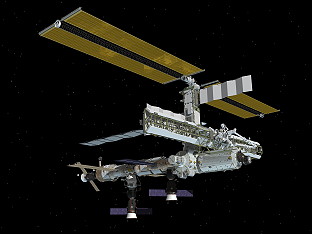 |
 |
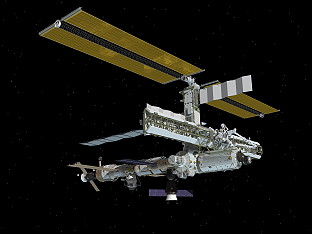 |
|
Photos / Graphics
 |
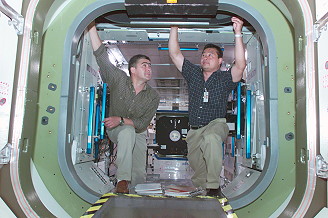 |
 |
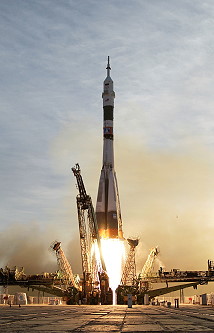 |
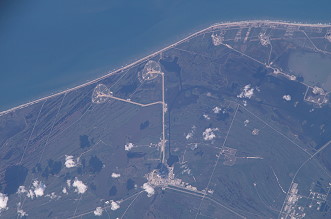 |
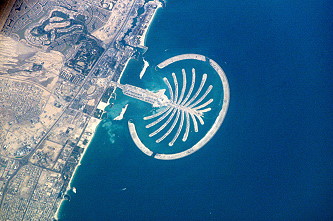 |
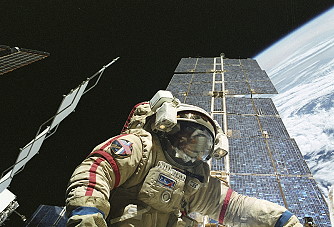 |
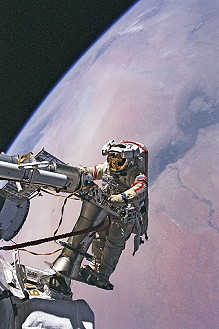 |
 |
 |
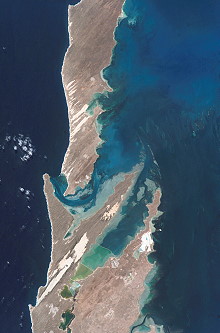 |
 |
 |
|
more Earth observation photos |
|
more EVA photos |
|
more onboard photos |
|
| © |  |
Last update on May 15, 2025.  |
 |